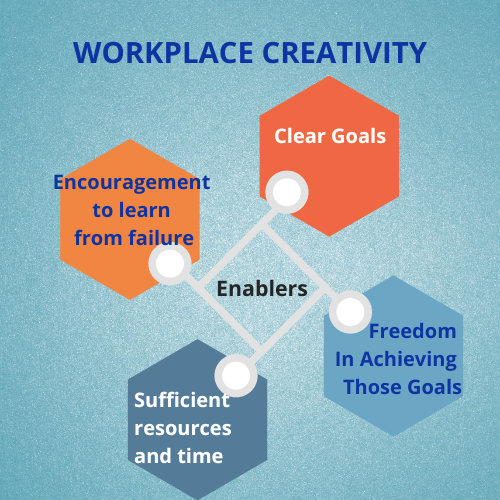
Are you as creative now as you were when you were a child?
For many people, the answer is no. As we move into adulthood, we are often conditioned to be more serious and to conform to the norms of society. We lose some of the freedom and playfulness that inspired our wacky kid ideas. At the same time, our jobs seem to demand more and more new ideas, creativity, and innovative thinking.
Dr. Teresa Amabile, a professor at Harvard Business School, has spent years researching what motivates us to be creative. She also observed what kills creativity and what helps it thrive.
We often think of creativity as a trait—something we all have more or less of—but her work has identified a missing piece of the puzzle: how our social environments influence our ability to be creative. The upshot is that whoever we are, we can find ways to reignite creativity in ourselves and in our organizations.
Creativity researchers in the 70s essentially believed that there were two types of people: creative geniuses, and all the rest of us. Their studies focused on what distinguishes those creative geniuses, in terms of their special characteristics and traits. For example, highly creative people (those who consistently produce work recognized as creative) tend to have experience, expertise, and skills in a particular domain, and sometimes in multiple domains. They can also think in distinct ways: They see and understand unusual phenomena, take on new perspectives, and persevere in the face of challenges by exploring new approaches and finding unique solutions to problems.
But she had a hunch that there was more to the story than special skills and traits. And she didn’t believe that creativity was limited to only the geniuses. Then a new study suggested a crucial component of creativity: our social environment. Simply stated, “extrinsic” motivators—things outside ourselves and the activity that motivate us, such as competition, evaluation, and rewards—can dampen creativity.
Extrinsic motivators and constraints of many different kinds undermine creativity, she found, because they undermine the intrinsic motivation to create for its own sake, for the love of it. Her studies revealed that intrinsic motivation drives creativity; people are most creative when they’re motivated primarily by the interest, enjoyment, satisfaction, and personal challenge of the work itself—and not by extrinsic motivators.
Are rewards always bad for creativity?
As expected, people who chose to do an activity after being promised a reward for doing it showed the lowest level of creativity. But, to her surprise, she found that those who had no choice but still expected a reward showed the highest creativity. They were significantly more creative than people who worked without expecting a reward.
Her experiments have shown that extrinsic motivators that make people feel controlled or driven only by that motivator drain intrinsic motivation and stifle creativity. But extrinsic motivators that either allow a person to be more engaged, or confirm their competence, in something they are already keen to do, can synergistically add to intrinsic motivation and creativity. That delicate balance is what workplaces should be aiming for, but how can we achieve it?
Creativity in the workplace
The lesson for managers is straightforward: Pay attention to what your subordinates need to make progress in their most important work, tell them why that work matters, and provide the progress supports—whether they might be clear goals, freedom in achieving those goals, sufficient resources and time, encouragement to learn from failure, or any one of a number of other ways to ease inevitable setbacks and keep people moving forward with strong intrinsic motivation.
Creativity is crucial for our organizations; it’s one of the elusive abilities that managers are desperately seeking in their employees so their companies can survive in today’s competitive marketplace.
Creativity isn’t simply about finding the right candidates; it’s also about setting up the right work environment to allow people’s motivation and creativity to thrive.